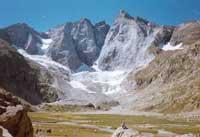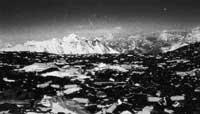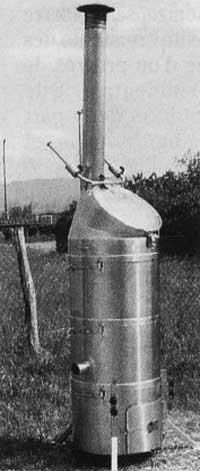From the farthest to the nearest, the mountains to debate
2002/06/30 Galarraga Aiestaran, Ana - Elhuyar Zientzia
Alberto, Edurne, Jon, Iñaki, Jon, Juanito and other mountaineers of high level have made the followers of their ascents know firsthand the mountains of the Himalayas. In these altitudes they have known how much the body suffers, words like sherpas and crampons have become normal and, above all, they have been able to enjoy the unique beauty of the mountains.
They have also known that not everything is beautiful, and that this high mountain activity has its dark differences. For example, more than one mountaineer has denounced that the base camp and the paths of the famous and prestigious mountains have become landfills.
Sweeping the Everest

It is known that the mountain of Everest is one of the mountains of the Himalayas that collects more trash; on the one hand, being the highest in the world makes the most attractive and every year thousands of expeditions go there. On the other hand, a lot of material is needed to upload it (shops, food cans, plastic cans, oxygen cylinders, strings...) and how to take it all around is difficult, they stay there once used. In 1993 the Government of Nepal deposited a bail for shipments to be paid in cash if they did not collect all the garbage back. However, sometimes waste is not accessible because it has remained in very dangerous places and unfortunately the same happens with the bodies of several mountaineers.
The Everest garbage cleaning campaigns, especially in the base camp and on the part of Tibet, have been earlier. The latter was carried out by a team of 29 mountaineers from Georgia, Japan, Korea and Nepal. From the base camp, right between the second camp and the southern hill, it was intended to collect more than 1,500 kilos of garbage, and even they have tried to recover the bodies of the mountaineers who by chance had remained there.
The second camp of Everest is at 6,400 meters of altitude and is considered as an advanced base camp, from which most of the climbs begin. On the other hand, from the south hill located at 7.900 meters, the mountaineers start the final straight to reach the top. Therefore, they have not been very easy to work, but they have already achieved one of the goals they seek: that people become aware of this problem.
However, similar projects receive criticism from some and warn that the problem is much more serious. They consider that the solution should be deeper. The expeditions claim that its influence on the ecology and way of life of people should be analyzed and show a respectful attitude.
Without going so far away
In the Pyrenees themselves, as for the use of the mountain, do not always coincide the views of the mountaineers, ecologists and their inhabitants. The fact that some areas are already legally protected does not guarantee their good state or better conservation, since many times it is only possible to attract people. In recent years the ‘green tourism’ has become fashionable, and although the damage caused by the rise of tourism in nature is evident, many of the inhabitants of these places live thanks to it. Therefore, the subject is very complicated.
Despite the fact that people living in the mountains have a more modest life than in previous times, of course, they want to have the same services and facilities as those living in valleys and plains. Therefore, it is understandable to promote projects to achieve this. But, sometimes, to clarify what is the final objective, it is advisable to analyze well the political and economic interests underlying these projects.

For all this, it is not surprising that a debate arises in several points of the Pyrenees: for example, in Bujaruelo the mayor of Torla is wishing to install a cable car, while those of Chistau and Bielcoz want to install ski resorts in Punta Solza and Punta Beg, Candanchu, Astun and Formigal want to join a large ski resort. For whom do these types of projects benefit?
Right here, right here
In the mountains of Euskal Herria there are also similar problems. A few years ago, in view of the deterioration of the mountains, ecological and mountain groups worked very hard to raise people's awareness of the problem. Consequently, something seemed to have been achieved and, among other things, several natural parks were declared.
However, it seems that lately other interests have been strengthened, and in many places there is a lively debate about the projects to be carried out: The tracks that are wanted to open in Aralar, the more and more spacious quarries, the wind farms that want to implement... Later, when Euskal Herria is presented at the tourism fairs, they talk about ‘green tourism’. But if the green areas are disappearing, where will tourists enter?
Published in the supplement Gara Station.

Gai honi buruzko eduki gehiago
Elhuyarrek garatutako teknologia






